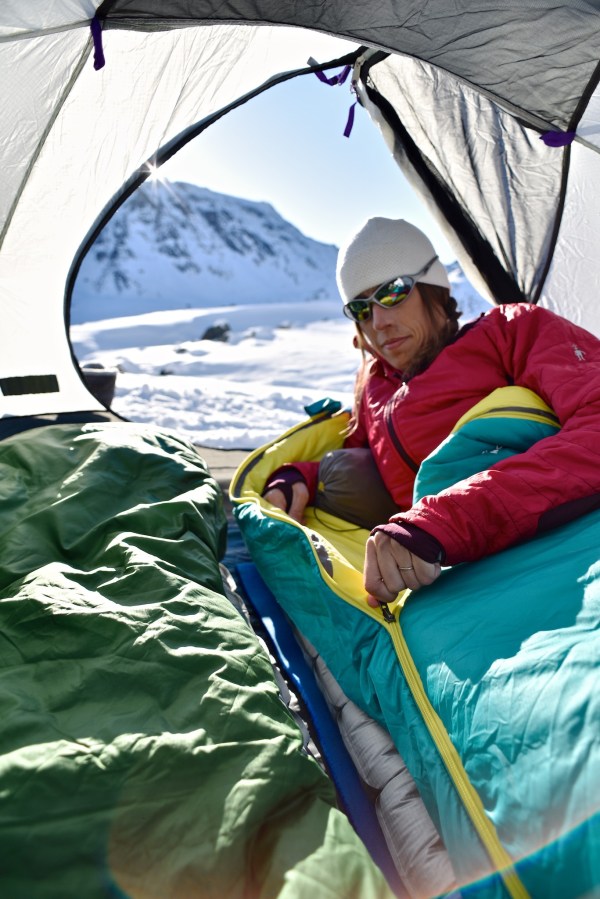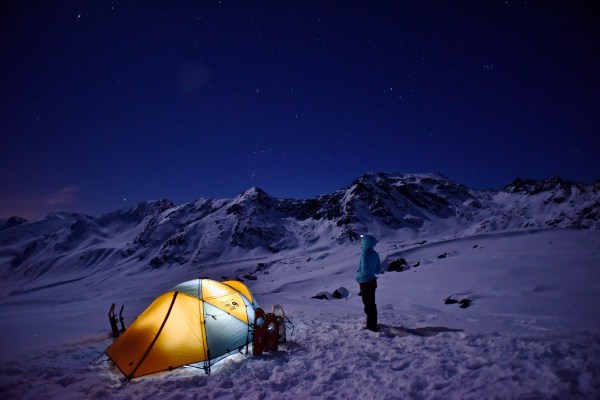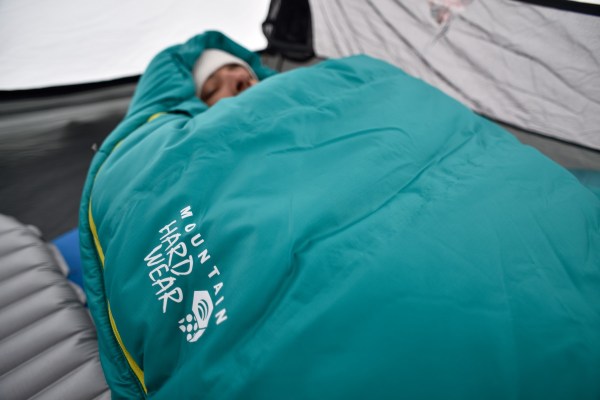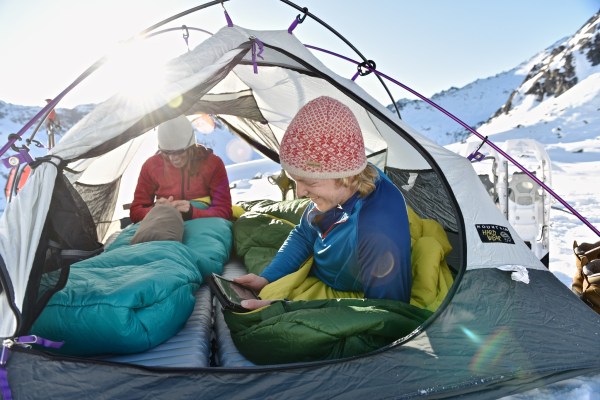Our production work requires us to carry a lot more technical equipment into the backcountry than the average outdoor enthusiast. This makes any space in our backpacks a premium commodity, and any way that we can cut down on the weight we’re carrying a priority.
Most of the time, we use high-quality down sleeping bags that save on both space and weight in our packs. A win-win situation for us. But just like every other decision in the backcountry, it’s not as simple as it seems.

Over the years, we’ve come across dozens of situations where trying to sleep in the lightest fluff of goose down covered in a tissue paper shell was not the best idea. This spring we got the opportunity to try out and photograph the new Lamina Z Flame sleeping bags from Mountain Hardwear, the latest and greatest synthetic bags to hit the market. We were stoked to take a look at what’s been going on with synthetic insulation and technology the last few years. The trial run would be a spring backpacking trek into the Talkeetna Mountains north of our home in Southcentral Alaska. It had been an unusually warm spring, making for sloppy wet-snow conditions and high humidity at night—perfect for these kind of sleeping bags. Our party used the Lamina Z Flames and equivalently rated down sleeping bags.
When we unpacked the Mountain Hardwear boxes in our gear prep room at home, we were pleasantly surprised with the bags’ size and loft when laid out. Packing them for our test trip in the included compression stuff sacks, the Lamina Zs took up just a little more space (7″ x 15″ as advertised) than the down sleeping bags we’d normally use for these conditions. Considering the conditions, this was an acceptable trade off for a more robust, forgiving sleeping system. When setting up camp in early spring situations, it can be hard to keep everything off the snow. That’s even more critical with a down sleeping bag, as wetness can seep in through the best nylon shells. We didn’t feel like we had to be so careful with the Lamina Z bags. We even brought them out of the tent while sitting under the stars watching for the aurora borealis to appear.

Of course the key test for any sleeping bag is whether it can keep you warm in the temperatures it’s rated for. Our nighttime lows were 23 degrees Fahrenheit with light winds, right at the 21-degree-Fahrenheit rating for the Flame. We were plenty warm in our usual merino wool base layers and zipped up in the sleeping bags. Depending on the tent, we feel that we could even push these bags another ten degrees colder and still be comfortable. A couple aspects of the Lamina Z contribute to this. First is the how the Thermal.Q™ fill is distributed throughout the sleeping bag. Mountain Hardwear calls it Zoned Insulation: putting more fill over key regions for heat, like your torso, and less over your legs. The Lamina Zs are also built with welded baffles instead of sewn-through stitching that “pinches” the shell and liner together, creating weak spots in the insulation. Baffles are an important part of sleeping bag construction, keeping the insulation evenly distributed with no bunching up in the foot area. The way the Lamina Z is constructed, we really felt wrapped in a continuous blanket of insulation.
Another contributing factor to a good night’s sleep was the spacious, well-built foot box that remained expanded all night, trapping warmth down at the feet. Sometimes we feel this is a weak point with down sleeping bags. If the foot area collapses at night, it reduces the amount of warm air it can trap—thus the cold-foot syndrome of nights spent in a lot of sleeping bags.

There was also a draft collar to help keep in hard-won body heat. This feature is key to pushing the temperature limits of any sleeping bag, especially if it includes snaps or rip-and-stick tabs to properly close up the collar. The Lamina Z could use this feature to complete its draft collar.

Lastly, the Thermal.Q fill really aced the humid (60%) early spring nights, efficiently moving perspiration out of the sleeping bags. Those in the Lamina Z Flames lacked that clammy feel reported by those in the equivalent down bags. You could also see it on the sleeping bags themselves: The outside shell of the Flames was dry while you could see and feel the dampness on the outside and inside of the down bag. In addition to a more comfortable night’s sleep, the Lamina Z bags could be stuffed early in the morning while the down bags needed to be dried out in the sun before breaking camp.

While the Lamina Z Flames performed well and as advertised, we’d still be hard pressed to carry them a significant distance. Their packed size is close to an equivalent down sleeping bag, but their weight is still a factor (nearly twice as heavy at 43 ounces as the down bag’s 24 ounces). That being said, it’s all about the right tool for the right job.
We have an upcoming packrafting adventure and seakayaking expedition that would be perfect for the robust, moisture-resistant qualities of the Lamina Z. Anyone doing anything in Alaska or the Pacific Northwest could benefit from this. It depends on whether you’re the type of backpacker who takes meticulous care to keep a down sleeping bag dry, or whether you’d prefer to not deal with it. These sleeping bags would also probably weather a bivouac on Sierra granite better than most ultralight down bags, which might feel lighter on your back, but just get shredded as you shiver through the night.
The yin and yang of sleeping bags continues.
